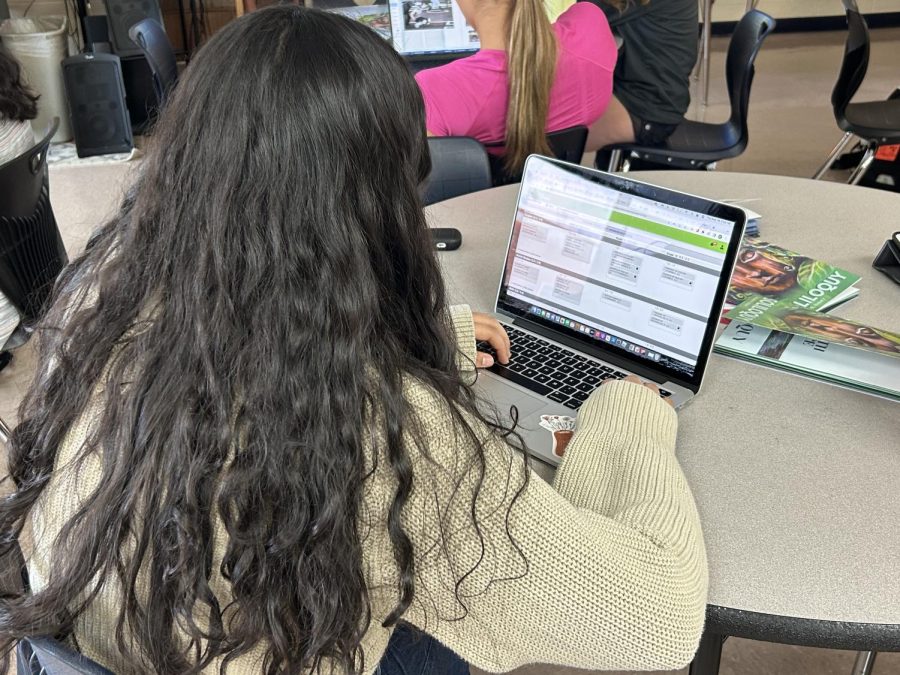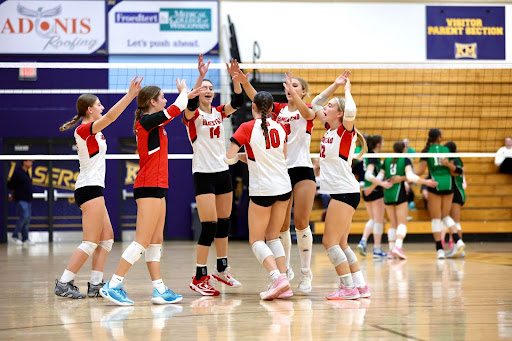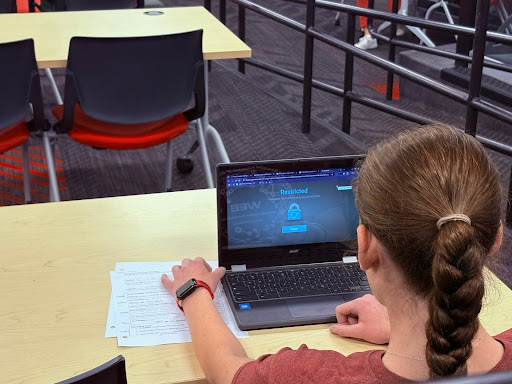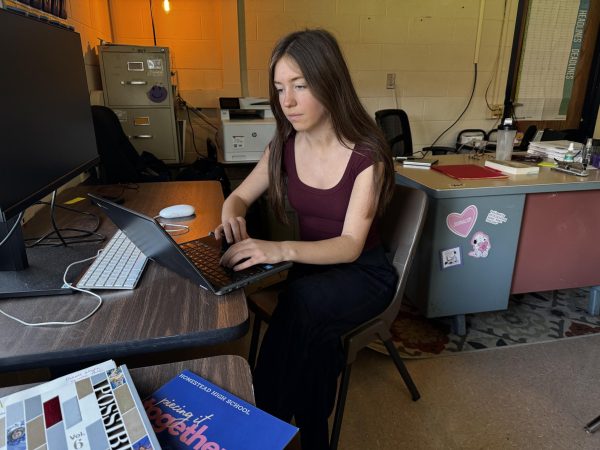Request, Reform, Receive: How the schedule gets made
Raima Naurin, sophomore, adjusts her course plan in Infinite Campus.
From AP Spanish to Drawing 1 and everything in between, 18,203 students submitted course requests for the 2023-2024 school year. Between these course request forms being submitted in January and students receiving their schedules and comparing them with their friends in August, many hours of work go into creating individual schedules to address every students’ wants and needs.
“We have to make sure that we have enough sections and teachers to teach all those classes and all those requests for the kids. So for example, let’s use Lang and Comp as an easy one. Lang and Comp on some level, whether it is AP or regular, is a required class that every junior in the school has to take. So we look at the numbers of how many kids requested Lang and how many requested AP Lang and how many requested AP Seminar, which also includes Lang. And then we have to create sections of classes based on those requests. And the same is really true of every class and every subject in the school,” Kris Besler, counseling department chair, said.
After Principal Eric Ebert signs off on how many sections to run and teachers are assigned their course, the counseling department then runs them through a program in Infinite Campus.
“Then essentially we allow Infinite Campus to do what it does and create a schedule that is able to, like the matching game, match all those requests from January. And this takes months to do, by the way. As you can imagine, this is not a simple task. This takes months to do. So we have the sections that have been entered into the computer, we have the almost 19,000 requests of the students, and then it becomes a process then, of where the computer then creates the schedules for the students,” Besler said.
After the program creates its plan for a schedule, the team uses what they call “strategic manipulation” to make more kids get the classes they request.
“So then sometimes what we do is we go in and say, okay, if you could switch this class with Mr. Bauer, 30 more kids could be placed into English’. So that’s what strategic manipulation is. It’s looking at what our first choice was for teaching and teacher and section and time and trimester and strategically looking at that like ‘I know that’s not ideal because normally she would teach this and he would teach that, but if they would switch, it’s gonna make 30 more kids’ schedules work’. And so we do it,” Besler said.
Despite the efforts of the group and the automated effectiveness of the program, not every single course requested by students will work out. Oftentimes students will get called into the counseling office to change around their schedule in order to make things work.
“I got an email saying I had a conflict, so I scheduled a meeting and I went in. I had to change a bunch of classes because my English class is three tris long. I picked up Advanced Programming, and I had to drop Cybersecurity and Intro to Game Design. The counselors were helpful, but it was annoying that I had to change it,” Patrick Brown, sophomore, said.
This is a fairly rare occurrence, as according to Lori Pedrick, school registrar, around 83% of students get every class they request, and even when they do not, “Very rarely do they have more than two conflicts. It does happen but not very often,” Pedrick said.
Many of these conflicts come from what the department refers to as ‘singletons’, or classes that only have one section run that school year.
“If there’s one kid in a singleton class that’s requesting another singleton class, you know, that may get scheduled in the same hour. And unfortunately, and I feel really bad about this, there are going to be kids in the school that have to make really, really tough decisions about. ‘Am I gonna take this singleton class or am I gonna take this singleton class because they’re only offered once and they happen to be the same hour,’” Pedrick said.
Another issue when planning the schedule is “constraints” on what trimester classes have to be.
“There are constraints on the schedule based upon AP exams. Testing exams like for Latin (are) also a constraint as there can only be one section of a certain class. So like AP Spanish, Latin five, et cetera. So that’s a constraint because then when on earth do we put that one class?” Besler said.
With all the constraints, changes and singletons, creating the schedule ultimately begins to feel like a challenge to solve for those working on it.
“So, English, math, science, social studies, world language, business, physical education, health, computer science, in every department then we have to look at all these numbers. So it’s like a big geometry puzzle…that you have to put together to try and make sure that the students get what they want to take,” Besler said.

Matthew Seiberlich is a senior at Homestead High School. Outside of Publications, Matthew is an Eagle Scout, President of the Wisconsin Junior Classical...










